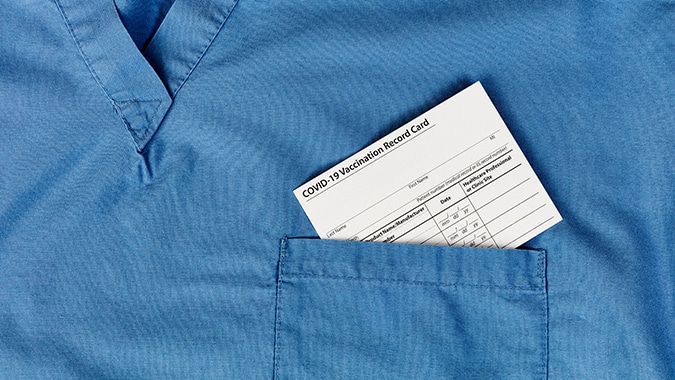Employers with questions about the federal government’s new Paycheck Protection Program turned to SobelCo accountants for answers during a recent NJBIA webcast aimed at cutting through confusion about the application process for these loans aimed at helping businesses survive the COVID-19 crisis.
CPAs Mark Weber and Chris Martin said Wednesday the rollout of the $349 billion Paycheck Protection Program (PPP) on April 3 did not go smoothly for all of the New Jersey small businesses and nonprofits that tried to apply to banks for the low-interest, potentially forgivable, loans backed by the federal government. (Self-employed and independent contractors have to wait until April 10 to apply).
“Banks have been all over the place on this,” Weber said during the Town Hall-style webcast. “Some people are saying it’s running smoothly, and others are saying it’s barely running.”
Weber said some of his firm’s clients who applied were successful and already have had the federal funds electronically deposited into their business checking accounts. However, most clients report being stymied by a frustrating online application process that kept “timing out” and crashing. Some clients have complained that larger banks have been unresponsive, put them on wait lists, misinterpreted the federal guidelines, or rejected their applications by using a criteria that is not in the federal statute.
Business owners facing these roadblocks may be better off dealing instead with smaller banks where they can more easily get a live banker on the phone to guide them through the process, Weber said.
“My recommendation is to try to go down that SBA list and find small banks in your area because the smaller banks are more likely to work with you,” Weber said. “You’re probably going to end up needing to move your relationship to that bank… but look at small banks because they are more forgiving and more genial in this area.”
PPP loans can be used to cover payroll, healthcare and pensions, interest on mortgage or other debts, rent, and utilities. Businesses with fewer than 500 employees can be eligible for loans of up to $10 million based on a formula tied to their average monthly payroll costs over a one-year period, multiplied by 2.5. When calculating payroll costs, employers are permitted to include an employee’s wages (up to $100,000), commissions, vacation and sick time, health benefits costs and pension and retirement costs.
Repayment of the two-year loans at 1% interest is deferred for six months, Martin said. However, all or a portion of the loan could be be forgiven if during the eight-week period after receipt of the loan the business spends at least at least 75% on payroll costs, rather than the other approved uses, and generally maintains its staffing levels. Forgiven PPP loans are also tax-exempt.
A few of the specific questions and answers from the webcast, which was moderated by NJBIA Vice President of Government Affairs Ray Cantor, are found below. Attendee questions and answers provided by Weber and Martin are edited for space and clarity. To view the complete recording go here.
Q: Can I apply to multiple banks for a PPP loan?
A: It would be hard enough to apply to one bank, let alone more than one. I don’t think you should be applying to many banks at the same time. I would say if they reject your application, then you should be able to go to another bank.
Q: What if my bank has put me on a wait list?
A: You probably don’t want to submit more than one application at the same time. But if you are on a wait list, I would find another bank that is willing to take your application and talk to them. Then as soon as you’re done submitting that second application, immediately pull the original application from the bank that put you on a wait list.
Q: If after receiving a PPP loan an employee is terminated, but then replaced with another hire, does that impact potential loan forgiveness at all? Does it have to be the same employees on the payroll or is it the headcount that matters?
A: The headcount and the wages (paid to the replacement employee) are what matters. If the person coming in isn’t paid more than 25% less than the original employee, it should work.
Q: Are landlords considered self-employed if their income is derived from rents?
A: There’s a list of ineligible participants and companies, and real estate rentals is one of them. Now there’s a question of interpretation if you’re talking about a company actively involved in management, leasing of many buildings and so on – that’s a gray area. But if all you do is own a real estate investment and collect rent, you do not qualify.
Q: We contribute healthcare and retirement benefits collectively under a union bargaining agreement. Can we still include those healthcare and retirement costs as part of our payroll calculation in the PPP application even though we don’t directly pay healthcare premiums or contribute directly to a retirement account?
A: I believe the answer is yes. We have a lot of supermarkets we deal with and other unionized businesses and we’ve been including that cost and I haven’t seen any issues with that yet.
Q: We are a two-man partnership with 1099 subcontractors. We work from a home office and have no salaries; 90% of our income goes back to the business. What do we do?
A. You are self-employed and should file on Friday (April 10) with your self-employment income. All of your 1099 independent contractors, however, will have to file on their own.



